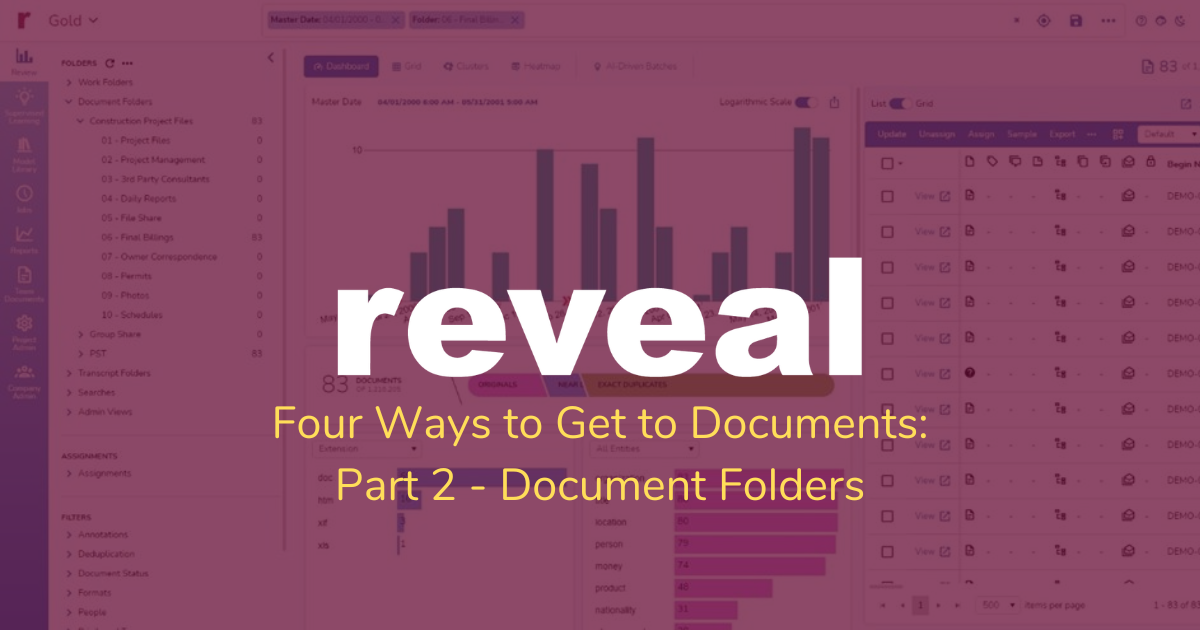Four Ways to Get to Documents: Part 2 - Document Folders
A key function of any eDiscovery platform is to let you quickly and easily get to documents you care about. Reveal offers many ways for you to do that. In the first post in this series, I discussed Work Folders.
In this post, I turn to Document Folders.
Folders in Reveal
To recap, Reveal 11 uses folders to help with the organization of your data and what you do with that data. Folders in Reveal 11 are like the folders you find in, for example, File Explorer on a PC, Finder on a Mac, or Outlook. When you go into Reveal 11, you see five default types of top-level folders: Work Folders, Document Folders, Transcript Folders, Searches, and Admin Views:
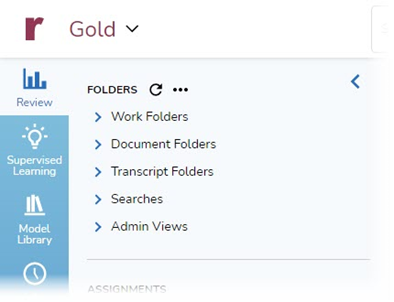
Document Folders
Reveal 11 uses Document Folders to represent the organization and contents of data loaded to the platform. Under the Document Folders heading, you can find a subfolder for each dataset added to your project.
Document Folders are generated when data is loaded into the platform or through a back-end process performed by someone with administrative rights to the platform.
Once created, Document Folders cannot be modified by users. This protects the fidelity of the structure and contents of the folders.
Here is an example of Document Folders, displaying three folders and the number of documents in each folder:
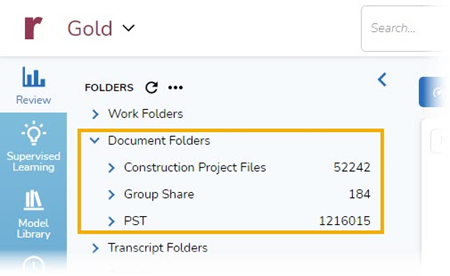
In this example, there are three top-level Document Folders, each for a different collection of documents: a set of construction project files, files from a network group share, and a collection of PST files.
The contents of each folder faithfully represent the data as it was organized when that set was collected. The contents and their organization can differ greatly from one folder to the next, as seen here:
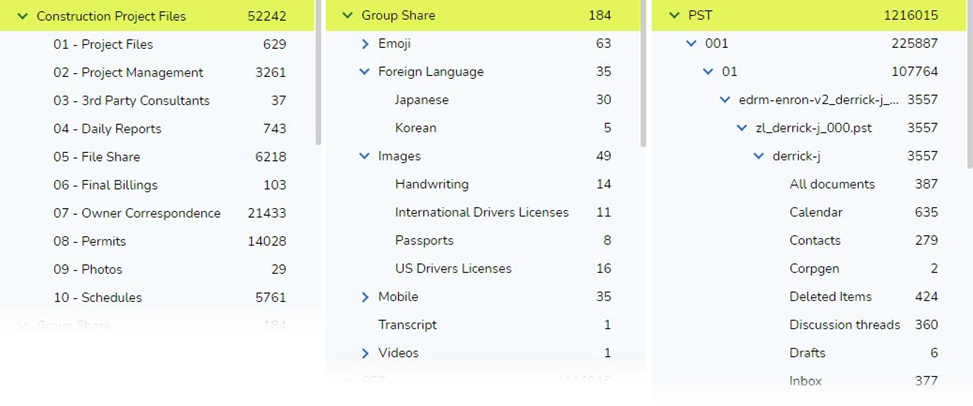
Document Folders are recursive. If you click on the arrow to the left of a Document Folder, a list of subfolders and documents in that folder will be displayed. You can continue drilling into the content for as far as it goes:
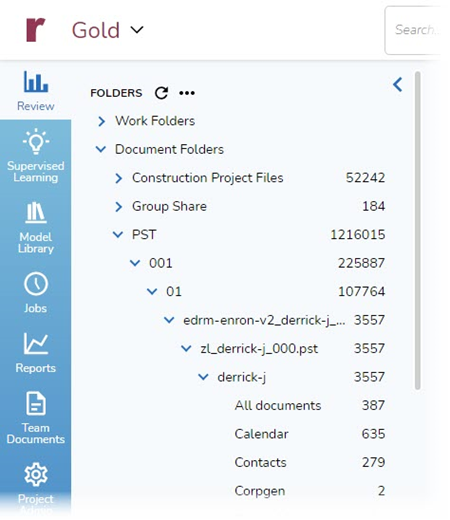
Why Use Document Folders
You can use Document Folders in many ways. Two ways are to better understand the original organization of a set of data, and to focus on a particular collection of documents.
Gain a Better Understanding
Finding out how someone organized documents is a time-honored method for a litigator to better know and understand that person. Looking at folder structures – whether manilla folders in a cardboard box, virtual folders in File Explorer on a PC or Finder on a Mac, or virtual folders in programs such as Outlook and Gmail – often was my best way of getting into someone’s head without talking with that person.
Often, I would find that examining how a person organized information gave me insights I was not able to obtain by talking with or questioning that person. If I was lucky, I could start to get an idea of how organized that person might have been, what that person thought, who that person was. The folder structure also often represented the closest I could get to a disinterested contemporaneous view of what happened. Finally, folder structures and contents were what they were: no evasion, no prevarication, no lying.
Gaining this understanding was useful to me throughout the life of a matter. It would help me when I was preparing to interview a witness, putting together an outline of what I wanted to cover when taking a deposition, or figuring out what arguments to put forth in a set of motion papers.
You can apply the same principles to a group, if you have collections of folders and documents put together by a group of people such as the Group Share in the examples above.
Focus on a Particular Collection
By using Document Folders, you can focus on a specific set of documents. In the Construction Project Files example, there are 103 documents in the Final Billings folder. If I am trying to get a better handle on a billing dispute, that could be a great way for me to get a jump start.
Searching with Document Folders
Documents Folders don’t just represent how documents were organized. They are a powerful search tool as well.
Click on Folder Name
With one click, you can add a Document Folder to your search.
Here is what my Dashboard for this demo project looks like before I conduct any searches. It shows information about all 1,216,205 documents in the project including, in this view, a timeline of those documents, a breakdown by file extension, and a breakdown by entity type:
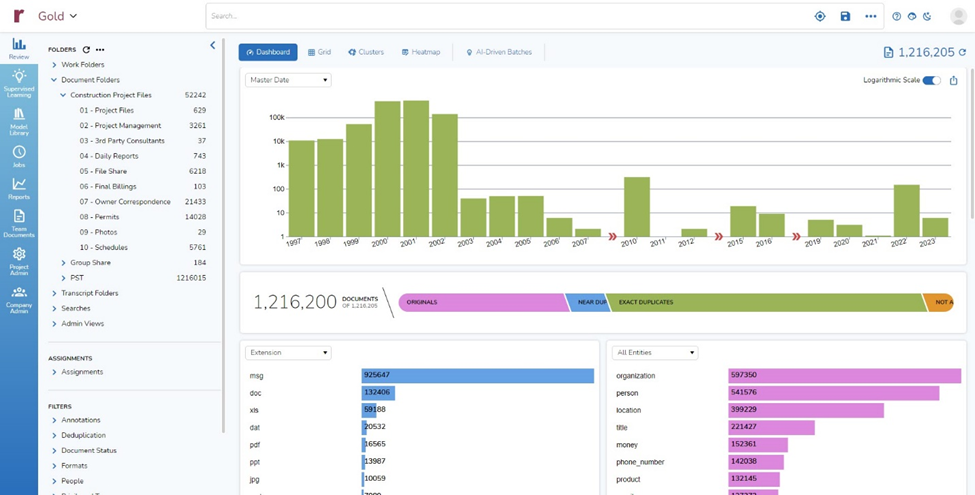
Here is what I see after I click on the Final Billings Document Folder to add it to my search. Now I have information about the 103 documents in that folder:
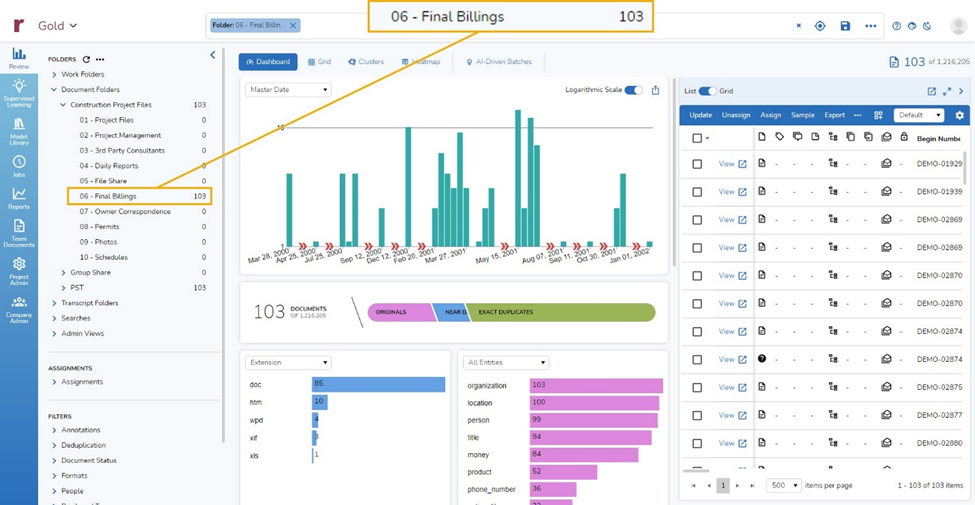
Use Advanced Search
You can use Advanced Search to add a Document Folder to an existing search.
Here, I already had created a search to look for documents from April 1, 2000, through May 31, 2000:
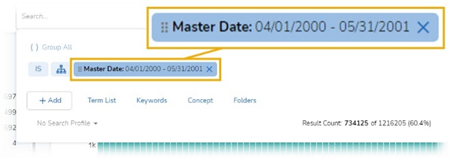
- In Advanced Search, selected Folders:
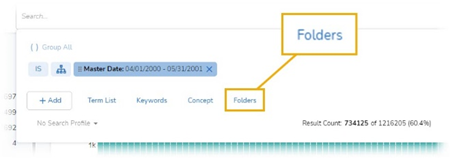
- In the Folder modal, click on the arrow to the left of Document Folders:
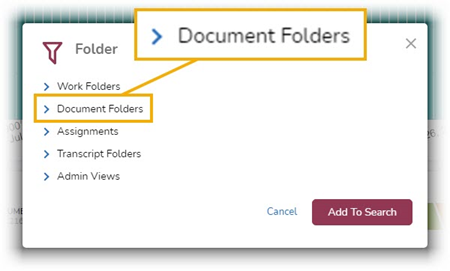
- Click on the arrow to the left of Construction Project Files:
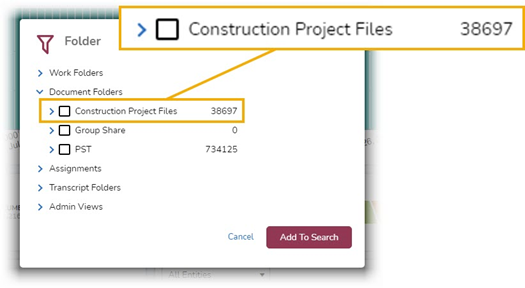
- Click in the box to the left of Final Billings to select that Document Folder and click on Add to Search. Note that before you even have run the search, results have been updated to show that 83 of the 103 documents in this folder fall in the 4/1/2000-5/31/2000 date range:
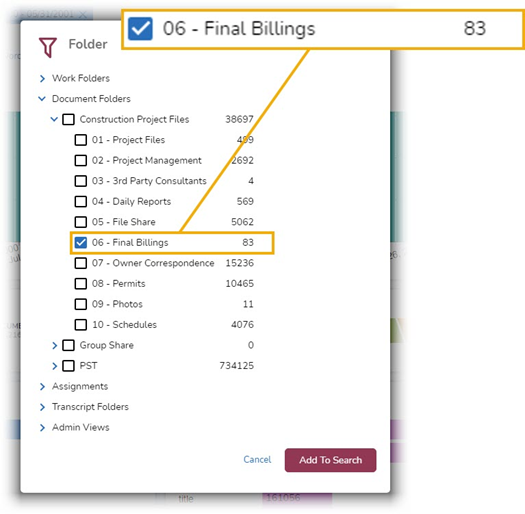
- Click on OR, changing it to AND, to modify the search so it looks for documents that both fall in the date range and are in the Final Billings folder:
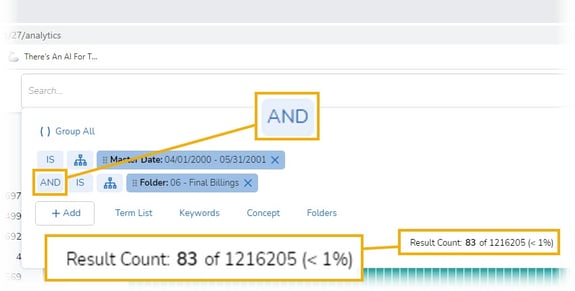
As soon as you change OR to AND, to search result count is updated from 734,145 to 83:
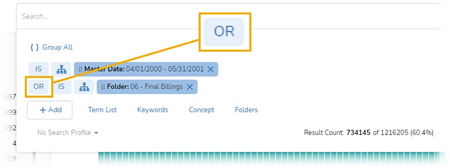
Here is the updated dashboard:
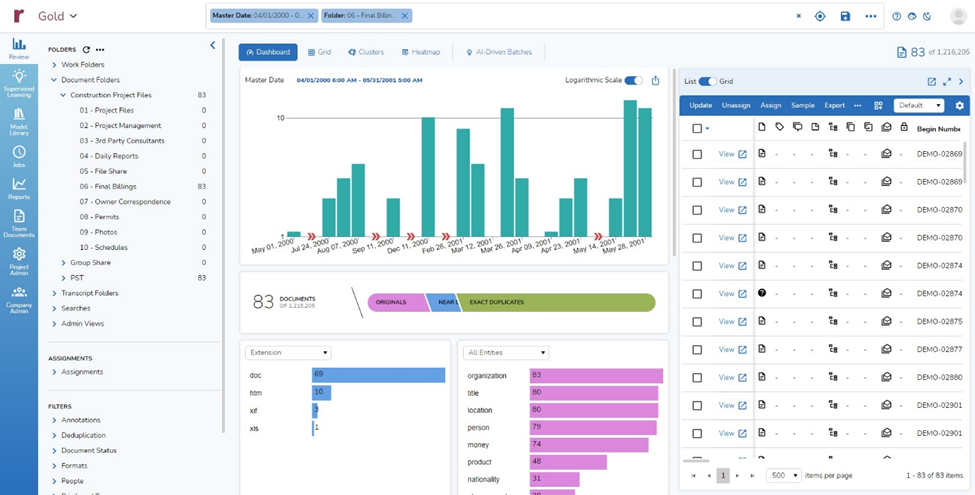
Learn More
Reveal offers a wealth of ways you can find and work with the data that matters to you most. For more information about how Reveal can empower you and your organization, contact us for a demo.

